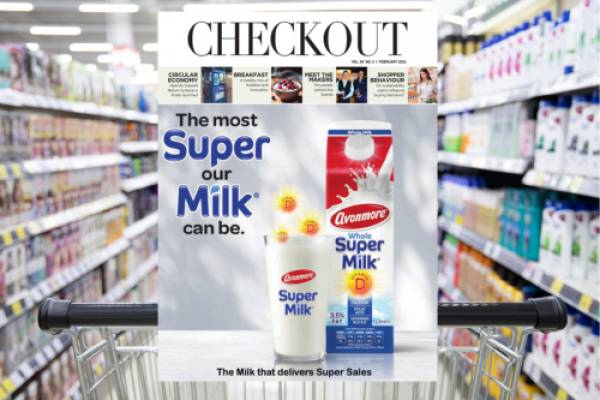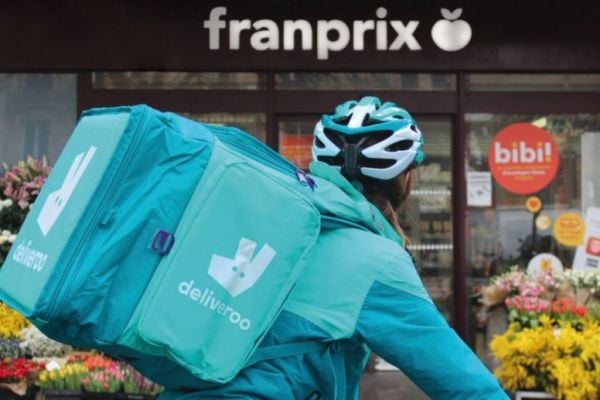Nielsen’s annual Christmas sales review always features a number of surprises, but certain fundamental truths remain for brands seeking to boost sales during the busiest shopping period of the year.
While Christmas 2014 was widely anticipated to be the ‘best’ for Irish retail for at least five years, price promotions and intense competition between the main grocers ensured that any growth was, for the most part, subdued. As Nielsen’s annual Christmas review, held at the Tony Ryan Academy in Citywest earlier this month indicated, while we are more optimistic about the economy, we remain reticent about splurging too much around the festive period, particularly when there is so much value to be had.
Economist Jim Power opened proceedings, explaining that consumer price inflation is “being forced into price compression at the moment” due to competitive pressures in the marketplace, with strong car sales – which account for some 40% of the retail market – “exaggerating the strength of the retail sales recovery.” Nonetheless, he remains more confident about the coming year, saying that while the “economic recovery story has become more compelling, the most fragile part is still the Irish consumer.”
Confidence On The Up
As Nielsen Ireland commercial director Matt Clark revealed, Irish consumer confidence is showing significant signs of improvement; Nielsen’s consumer confidence index for Ireland stood at 90 in Q4 2014, up from 65 two years previously. Our core concerns are changing; just 11% of us are concerned about the state of the economy, down from 20% in 2012, while the percentage concerned about their ‘work-life’ balance has risen from 5% (in Q4 2012) to 10% in the last quarter. “When times are good, people tend to worry more about their health and work-life balance, and less about the economy,” Clark explained, an indication of the changing mood.
Habits ‘Hard To Break’
While the fundamentals of the macroeconomic environment are improving, the level to which this trickles down to ground level is still debatable. Nielsen data found that while consumer confidence is reaching new highs, 42% of consumers say they will ‘continue to switch to cheaper grocery brands’, an increase on the previous quarter. To satisfy this demand, most store openings in the grocery space are based on a value proposition (Aldi, Lidl and Dealz leading the charge). Some 39% of consumers believe Aldi to be the cheapest supermarket, followed by Lidl on 32% and Tesco on 17%. Old habits – or at least those that we have adopted since the downturn – are hard to break.
And so on to the Christmas period itself, and while both volume (+1.0%) and value (+1.4%) sales saw an increase in November and December 2014, these figures do not represent a like-for-like comparison due to duty increases in alcohol and tobacco. Strip these categories out, and volume sales actually show an improvement of 1.1%, and value sales see a rise of just 0.8%; both showing growth, albeit with a widening value-volume gap driven by increased sectoral promotions.
This is also partly being driven by where Irish consumers shop; as Clark explained, “the discounters share of Christmas rose from 14% to 16%, and these trends will continue as long as Aldi and Lidl continue to open new stores. […] At Christmas, however, the multiples’ share goes up to 49%; consumers are still more likely to move away from the discounter and convenience channels at Christmas.”
Advertising Winners
As shown in Checkout’s quarterly Ad Tracker reports, retailers have consistently outspent the wider FMCG market in terms of advertising through 2014, and the 12 week period to 4 January was no different, with retailer ad spend up 9.8%, compared to a total FMCG spend increase of 4.3%, and an all market rise of 5.4%. Interestingly, retailers chose to advertise earlier than in previous years, with 42% of adverts taking place in November, compared to 35% the previous year. Total advertising by retailers was up 30% in November 2014, and actually 4% down in December; TV advertising grew by 45% in November (compared to +17% in December), while Press advertising rose 18% in November (-14% in December).
Somewhat unsurprisingly, given its massive media presence over the Christmas period, Dunnes Stores was the top spender on advertising in the period, although the difference in its spend year-on-year is phemomenal. Dunnes total spend rose by 78% in the period, while it increased its TV spend by a whopping 584%, as it centred on two key campaign messages: ‘Make Christmas’ and ‘Make Savings While You Shop’ (compared to a simple ‘12 Deals of Christmas’ message the previous year). Between this, and its decidedly slick press marketing – including brochures more akin to gourmet food parlours than a high street grocer – Dunnes certainly ‘won’ the festive marketing battle in a year that marked the retailer’s 70th birthday. However, as recent market share data (by Kantar Worldpanel) for the same period indicated, Dunnes’ actual sales growth remained subdued; the retailer’s festive performance was actually flat year-on-year, indicating the level to which promotions remain fundamental to the Dunnes offering.
Aldi (which decreased its spend by 7% in the period) and Lidl (which increased its spend by 1%) held second and third place respectively in terms of share of advertising spend, followed by Tesco (spend down 11%), SuperValu (up 3%) and M&S (up 21%). Also worth noting is the ‘style’ of the retailer messaging, particularly in TV advertising; while most adopted a ‘traditional Christmas values’ theme, Tesco deviated from the pack to focus on its ‘prices staying down’ message for the Christmas period.
Category Winners
The big category winners at Christmas were somewhat more predictable, with Alcohol and Confectionery displaying the most growth, particularly in the two-week period to 28 December (Alcohol +5.2%, Confectionery +3.9%). These two categories ‘lead’ the wider market, which remained subdued or showed year-on-year declines (Frozen Food fell by 3.1% in the two week period, for example). Alcohol and Confectionery were particularly strong in the Convenience channel, displaying +7.6% and +5.4% growth respectively in the two-week period.
However, behind these impressive growth figures lies an all too familiar tale of promotions. Some 54% of Alcohol products were sold on deal in the four weeks leading up to December 28, up from a yearly average of 38%. Whiskey and Brandy were the main focus areas of this: off-trade sales of Whiskey rose 11.7% in the four weeks to December 28, a period in which 66% of units were sold on deal, while Brandy rose 12.5%, with 82% of units sold on deal.
Similarly, 37% of Confectionery products were sold on deal during this core festive sales period, up from 35.9% for the year. Promotions drove value sales in particular in the Assortments subcategory, which grew by €236k, and Novelty Packs (+€43k).
Preparing For 2015
When planning for Christmas 2015, Clark advised retailers to consider several different options. Firstly, to consider seasonal packaging, regardless of whether a product is linked to Christmas or not. Secondly, brand owners should consider the power of TV advertising over the period, with consumers, including the hard to reach ‘young adult’ demographic, watching as much as five hours of TV on Christmas Day.
Thirdly and perhaps most interestingly, Clark encouraged brands to get their festive SKUs into stores earlier, in order to enjoy the benefits of the core Christmas period. “Brands need to make the most of the whole season,” he explained. “A lot of the big ‘winners’ during Christmas tended to get into stores in a big way in November, and enjoyed successes three to four weeks on from that.”
And lastly, the impact of in-store secondary displays cannot be overlooked, however many brands fall short of ensuring that said displays remain well-stocked during the festive period. “It’s important to find the mechanic that works in-store, and ensure that it is backed up accordingly,” said Clark.









